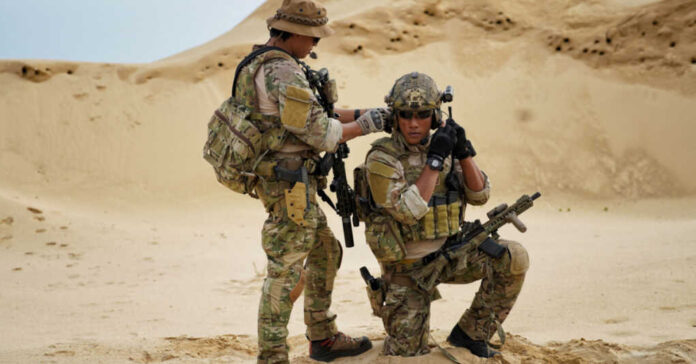
Painting a very conflicting and concerning picture, President Biden and officials from the Pentagon seem to be on very different pages when it comes to troop safety in the Middle East. A silent response from Biden contrasts distinctly with the statements from a senior defense official on October 23rd.
“We’ve seen rocket and [unmanned aerial vehicle] attacks against bases housing U.S. personnel in Iraq and Syria. And what you’ve heard from the president, from Secretary Blinken, from Secretary Austin, and many of the spokespeople across the U.S. government is our concern about the escalation of these attacks in the days ahead.”
He added, “We see a prospect for much more significant escalation against U.S. forces and personnel in the near term. And let’s be clear about it, the road leads back to Iran. Iran funds, arms, equips, and trains militias and proxy forces, all across the region that have consistently undermined the stability, cost in civilian life, and at a cost the entire region of security and stability.”
While Pentagon officials have resisted linking the Hamas and Israeli conflicts with an uptick in attacks against US assets, the gloves came off on the 23rd. With Brig. Gen. Pat Ryder owning up to the rumors that Hamas would intensify their attacks across the board, he cautioned that intel said it would only happen should Israel send in ground troops. With DOD officials already moving more military assets into the region, they have sent Hamas and other organizations a clear message, they will not stand down and allow Israel to be steamrolled.
Of the assets sent to the region, the USS Dwight D. Eisenhower Carrier Strike Group is one of the largest and they are in the Persian Gulf. Flanking from the other side is the USS Gerald Ford Carrier Strike Group in the Eastern Mediterranean Sea. Aboard are Marine units ready for assaults by any means necessary, and stationed in Kuwait and other areas are units ready to go at a moment’s notice.
Back stateside, thousands of troops have been given orders to be on standby, with their bags packed and equipment tested and ready to deploy. In a real-world scenario, these troops are ready and can deploy in under 36 hours. For many elite units, they are ready to be loaded onto planes and wheels up in under 8 hours. These are the kinds of missions these units train for, and it’s the cornerstone of their mission.
Given the initial estimation that most (if not all) US assets deployed would be there in a command-and-control structure, this means little long-term assets would be brought with them. In their place would be a force of brainpower and military strategy experts to advise and assist, with limited assets putting boots on the ground. However, as Afghanistan’s end and Iraq’s continued presence of advisors shows, there is still a major need for troops stationed there. No longer a short-term answer, their host countries have become at least somewhat dependent on them.
This information comes as President Biden continues to be proud of the 20 semi-trucks he got to rush supplies to Gaza and his overall lack of public acknowledgment of the issues going on. Seemingly more worried about how he is looked at for his participation in the conflict, he has forgotten his responsibility to Americans trapped in the region and troops stationed across the Middle East.
Bringing missile defense assets to US troops across the Middle East, Pentagon officials are stepping up to make the orders to protect our troops. Orders that the President should be thinking to issue, yet he perpetually forgets to get the word out, or assets moved. Yet all we get is radio silence. It certainly seems like Sleepy Joe has forgotten our troops and ignored the attacks that have been received so far in response to the conflict.
This is just the beginning, so buckle up. It’s about to get sporty boys and girls.







